Fall armyworm
Fall armyworm
Fall armyworm (FAW), Spodoptera frugiperda, arrived on mainland Australia in February 2020.
Since then, FAW has established populations in northern areas of Queensland, the Northern Territory and Western Australia. The movement of FAW is being monitored with movement into more southerly areas expected during warmer months through spring, summer and autumn.
Early indications are that maize and sorghum broadacre crops are a preferred food source for FAW, but it has also been found in some pulses. Potential impacts of FAW on crops grown in more southerly areas and its seasonal migratory range are not yet fully understood.
Growers and advisers should monitor industry updates on the migratory movement of FAW. Regular monitoring of crops to identify signs of early FAW infestation and implementing approved control measures is the best way of minimising economic losses caused by this pest.
This portal provides access to important information for Australian grain growers, including the national Fall Armyworm Continuity Plan – a reference document that consolidates information about FAW and its management in grain crops.
If you suspect FAW is present in your region, report it immediately to the Exotic Plant Pest Hotline on 1800 084 881.
The hotline will connect you to the responsible authority in your state or territory. Reporting the presence of FAW will assist in the response effort.
-
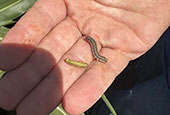
09 Feb 2024, Growers on alert for Fall armyworm
Fall armyworm (FAW) are being detected at unprecedented levels in sorghum crops across Central Queensland, the Western and Darling Downs and northern New South Wales.
-

04 Sept 2022, Fall armyworm steps and lessons
The arrival of fall armyworm (FAW) in 2020 is a timely illustration of the importance of being forewarned and forearmed.
-

04 Sep 2022, What happens in a pest incursion?
Have you ever wondered what goes on behind the scenes of biosecurity when a new pest is found in Australia?
-

04 Sep 2022, Multi-crop pests tackled on a coordinated front
Many pests can damage multiple crops across multiple industries, necessitating a coordinated, national approach to control measures and research.
-

28 May 2021, What happens when an exotic pest arrives in Australia?
An important part of Australia’s biosecurity system is to prepare for the arrival of exotic pests.
-
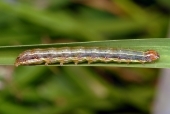
22 Mar 2021, Differences in insecticide sensitivity shown in fall armyworm
New research indicates there are variable levels of sensitivity to some insecticides between populations of fall armyworm in different geographical areas of Australia.
-

The Beatsheet: FAW
Fall armyworm was first detected in February 2020. Eradication has been determined to be unfeasible and it is now classified as an endemic pest.
-
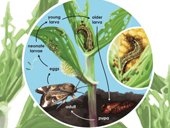
National Fall Armyworm Continuity Plan
The national Fall Armyworm Continuity Plan will assist industry representatives in preparing more localised and industry-specific communication and extension material.
-

Beatsheet: FAW pheromone traps
Information on the pheromone trapping network data for QLD and northern NSW.
-

Beatsheet: Fall armyworm thresholds based on overseas data
View fall armyworm thresholds based on overseas data.
-

Western Australia fall armyworm larval identification guide
A Western Australian fall armyworm larval identification guide from the Department of Primary Industries and Regional Development (DPIRD).
-
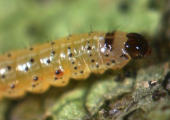
Queensland fall armyworm larval identification guide
A Queensland fall armyworm larval identification guide from the Queensland Department of Agriculture and Fisheries (QDAF).
-

Beatsheet: identifying armyworm larvae
Identifying armyworm larvae, a resource from Beatsheet – Pest Management for Australia’s Northern Grains region.
-
Permits
Insecticides will remain an important part of an IPM program, together with biological control and good agronomic practices. Consult relevant thresholds following the FITE principles; Find, Identify, Thresholds, Enact.
This table summarises APVMA permits for the control of Fall Armyworm (Spodoptera frugiperda) in grain crops. While this list will be updated when new permits are approved, permit approvals can and do change regularly. The current permit must be consulted and the approved use pattern followed. To access available permits consult the APVMA’s permit portal and search for ‘fall armyworm’ with the ‘pest/purpose’ button checked.Existing registered product options are not covered on this page. Some insecticides may be registered in your crop for the control of other Armyworm, Lepidoptera or Helicoverpa species and may provide incidental control of fall armyworm. (read notes at the bottom of this page)
Efficacy against Fall Armyworm in situations not specifically addressed by the registered product label or the below permits has not been considered by the APVMA and may prove to be ineffective. For further information contact the product manufacturer or your local agronomic advisor.
Whilst care has been exercised in the development of this guidance, users should ensure that they seek their own advice in relation to the use of insecticides, the efficacy of the relevant APVMA permit/s, and operation of the relevant State or Territory control of use legislation.
APVMA PERMIT APPROVED TREATMENT OPTIONS FOR FAW
CROP
INSECTICIDE
Alpha-cypermethirn
Indoxacarb
Spinetoram
Chlorantran-
iliprole
Emamectin
S. frugiperda NPV
(fawligen)Maize
Sorghum - - Millet
- - Peanut
- - Specified
pulse crops- -
-
-
Soybean
- - - - Specified
winter cereals- - - Canola
- - - - -
Sunflower
- - - - - Safflower
- - - - - Risk to
beneficialsaVery High
Low
Low
Low
Moderate
No impact
Internationally developed action thresholds are likely to provide the best guidance until locally developed thresholds become available. Late season crops may experience higher pest pressure as the FAW population builds.
If chemical intervention is required, other pests (e.g. Helicoverpa, mites, aphids) might be incidentally exposed and growers should consider the implications of insecticide resistance management and the impact on natural enemies.
Read the Croplife resistance management guidance for fall armyworm.
Natural enemies, including egg and larval parasitoids and predators, are likely to be important in suppressing FAW populations. FAW is in the same family (Noctuidae) as many other lepidopteran pests of field crops e.g. loopers, Helicoverpa, cutworm and other armyworms. All these pests are attacked by various egg, larval and pupal parasitoids, predators, and diseases.
Pesticides and bee protection: In addition to following all the product label (and approved permit) directions, good communication between growers and beekeepers on a local level can assist greatly in managing potential risk to bees. The online tool BeeConnected helps to facilitate this communication by connecting registered beekeepers with registered farmers and contractors, enabling two-way communication on the location of hives and crop protection activities.
Notes:
At the time of developing this guidance, it is understood that:
i) current State and Territory control of use legislation permits use of a product in a specified crop or situation to deliberately targets pests that are not listed for control in that crop or situation. However, this is subject to all label Directions for Use being followed including; crop type, rate, timing/crop growth stage, withholding periods to harvest and grazing along with all ‘DO NOT’ constraint statements. Control of non-listed pests may still be ineffective.
-
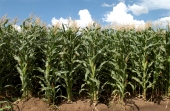
Potential impact of fall armyworm on corn or maize
Potential impact of fall armyworm on corn or maize – a factsheet resource prepared for Queensland maize growers by the Queensland Department of Agriculture and Fisheries (QDAF).
-

Management in maize and sweet corn in Western Australia
Fall Armyworm in Western Australia – Management in maize and sweet corn, a resource for WA maize growers prepared by the Department of Primary Industries and Regional Development (DPIRD).
-
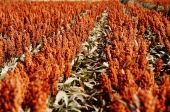
Potential impact of fall armyworm on sorghum
Potential impact of fall armyworm on sorghum – a factsheet resource prepared for Queensland sorghum growers by QDAF.
-
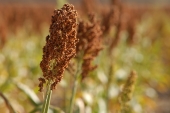
Management in sorghum in Western Australia
Fall Armyworm in Western Australia – Management in sorghum, a resource for WA sorghum growers prepared by the Department of Primary Industries and Regional Development (DPIRD).
-
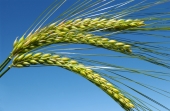
Potential impact of fall armyworm on wheat
Potential impact of fall armyworm on wheat – a factsheet resource prepared for Queensland wheat growers by the Queensland Department of Agriculture and Fisheries (QDAF).
-
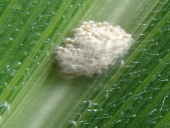
Potential impact in winter cereals in the Northern region
A resource from Beatsheet – Pest Management for Australia’s Northern Grains region.
-
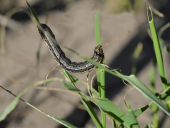
Management in grains, canola and pulses - wheat, barley, oats, canola, pulses
Fall armyworm in Western Australia -Management in grains, canola and pulses – wheat, barley, oats, canola, pulses from the Department of Primary Industries and Regional Development (DPIRD).
-

Croplife resistance management
The Croplife Australia resistance management strategy guidelines for Fall armyworm (Spodoptera frugiperda) from CropLife Australia.
-

09 Feb 2024, Managing FAW in sorghum – is there a threshold yet?
Late sorghum is susceptible to FAW damage, and potential yield loss, in the vegetative stage. This article discusses how the yield loss happens and how to determine if your crop is at risk.
-

5 Jul 2021, Fall armyworm biology
Information about the biology of fall armyworm from the Department of Primary Industries and Regional Development (DPIRD).
-

21 Dec 2020, Playing the waiting game on fall armyworm
As the maize season ends in the tropics, the waiting game begins – what will fall armyworm (FAW) be attracted to next?
-
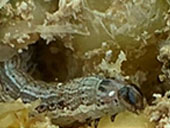
15 Dec 2020, GRDC’s Grains Research Update on fall armyworm
Watch a recording of the Grains Research Update on fall armyworm and access the Update papers and Q&A’s from the event.
-

9 Nov 2020, National Fall Armyworm Continuity Plan released
The national Fall Armyworm Continuity Plan will assist industry representatives in preparing more localised and industry-specific communication and extension material.
-

30 Oct 2020, Podcast series on the on the impact and management of fall armyworm
A podcast series on the impact and management of fall armyworm has been released by the Plant Biosecurity Research Initiative (PRBI).
-

3 Aug 2020, Resources put growers on front foot against FAW
Grain growers have access to a range of information and resources to help them identify and – if required – manage the incursion of fall armyworm (FAW) in Western Australia.
-

1 Aug 2020, GRDC partnership investment on fall armyworm genetics and resistance
By gaining a better understanding of fall armyworm’s (FAW) genetic make-up and insecticide sensitivities, effective pest management plans are being developed in a new CSIRO-led project.
-

31 Jul 2020, GRDC investment on fall armyworm current knowledge and RDE priorities
Part of GRDC’s response to fall armyworm has been to invest in a project investigating its biology, spread and establishment potential, as well as options for improving industry capability to manage the pest now and into the future.
-

Life cycle of the fall armyworm video
Watch a video on the lifecycle of the fall armyworm by the Centre for Agricultural and Biscience International (CABI).
-
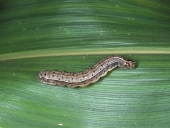
27 Aug 2020, Pesticide resistant genes detected in fall armyworm from WA
Pesticide resistance genes have been detected in Western Australia’s fall armyworm population.
Was this page helpful?
YOUR FEEDBACK
